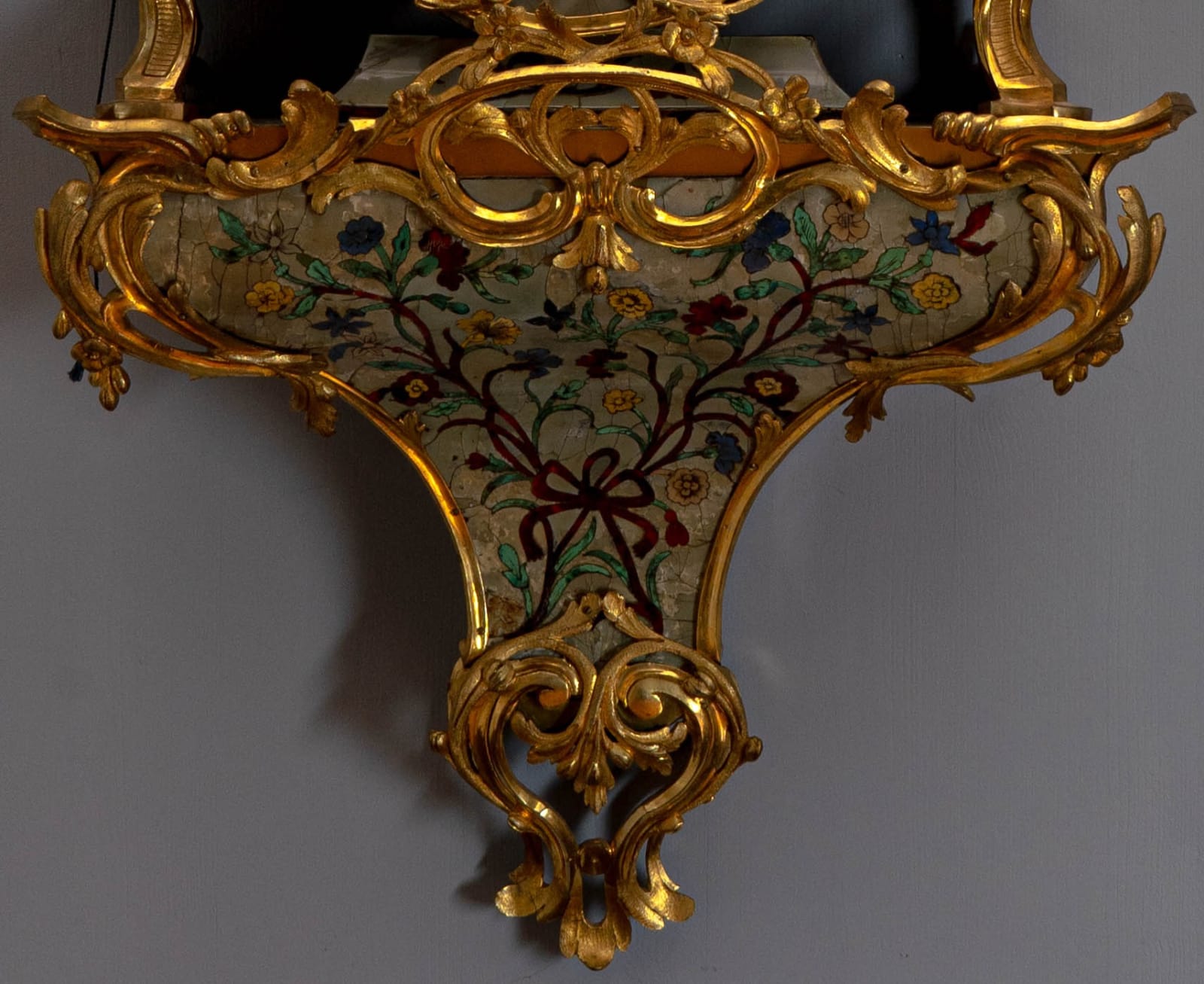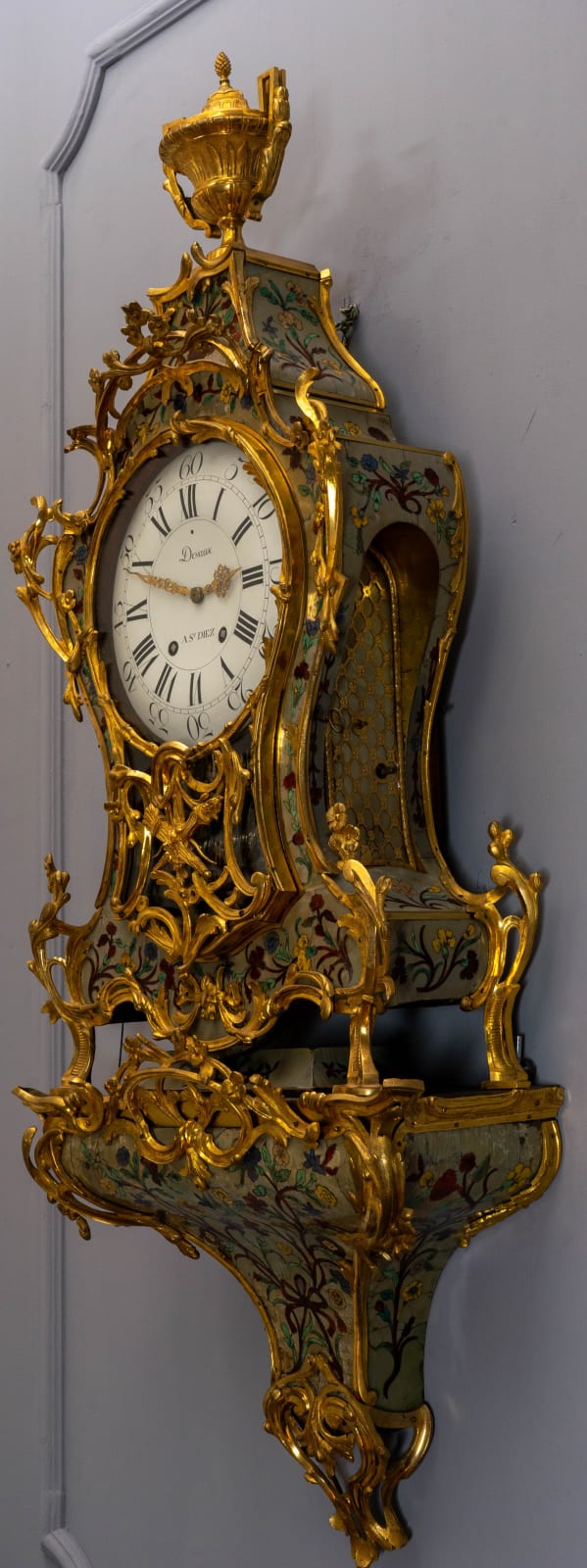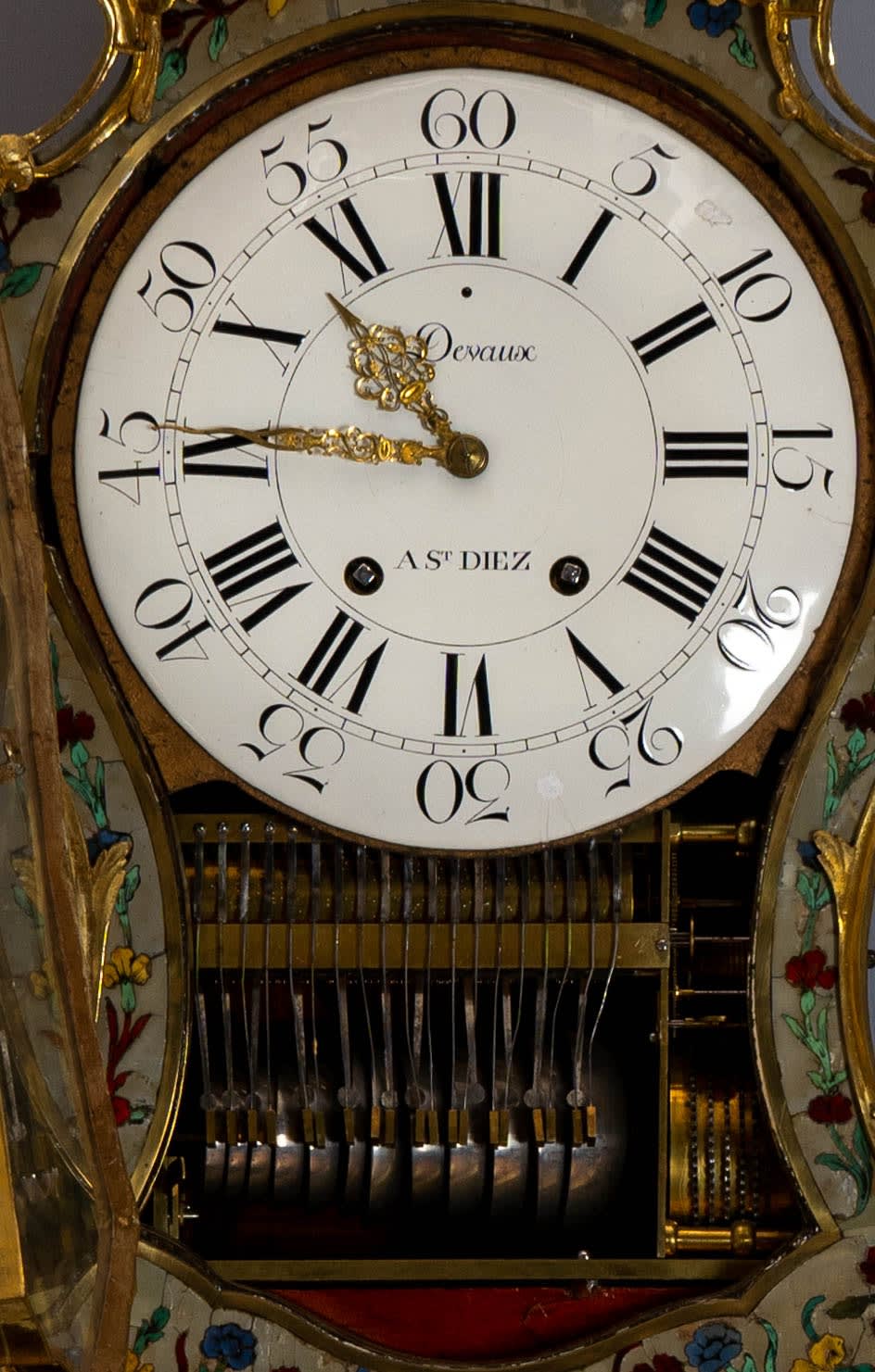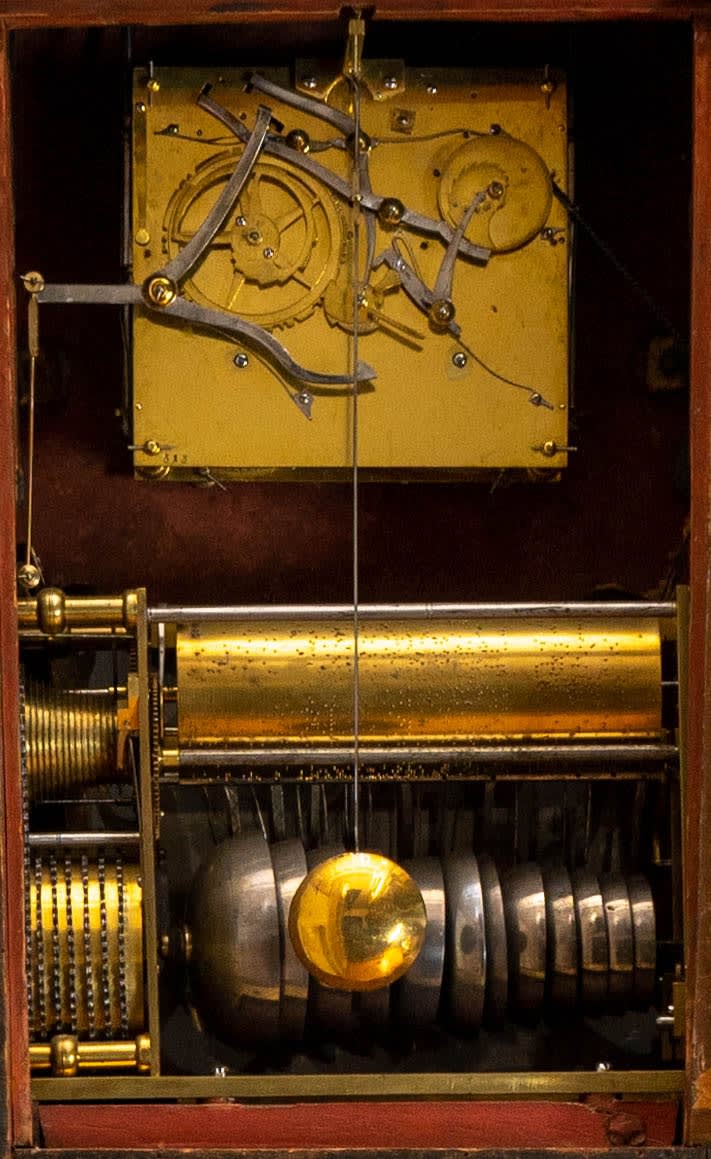Devaux à St Diez
Late Louis XV Grand Cartel with musical movement, circa 1770
Height: 136cm
Width: 52cm
Depth: 20cm
Width: 52cm
Depth: 20cm
Further images
This clock is illustrated in the "Encyclopédie de la Pendule Francaise" page 89, plate F
A rare and extremely beautiful late Louis XV gilt bronze mounted polychrome painted corne marquetry musical grand cartel clock with bracket of fourteen day duration by Devaux à Saint-Diez, signed on the white enamel dial Devaux St-Diez. The white enamel dial with Roman and Arabic numerals with a very fine pair of pierced gilt brass hands for the hours and minutes. The movement with silk thread suspension, outside count wheel and petit sonnerie striking the quarters with two hammers on two bells and hour strike on a single bell, the brass pin-barrel musical movement playing a selection of tunes on twelve bells via nineteen hammers. The horn marquetry case, painted overall with polychrome floral and foliate sprays, of waisted outline surmounted by a gilt bronze two handled vase with a berried finial, with elaborate foliate gilt bronze scrolls outlining the main body and continuing down above the splayed feet and around the base, the glazed front mounted below the dial and in front of the musical movement by further gilt bronze foliate scrolls and centred by a quiver of arrows and a flaming torch. The shaped bracket centred at the top with a foliate spray and adorned with further foliate scrolls and a foliate boss
Saint-Diez, France, date circa 1765-70
Height 136 cm, width 52 cm, depth 20 cm.
Provenance: Almost certainly Maurice Segoura, Paris
Literature: Giacomo Wannenes, “Le Più Belle Pendole Francesi. Da Luigi XIV All’Impero”, 1991, p. 78, illustrating a similar clock. Pierre Kjellberg, “Encyclopédie de la Pendule Française du Moyen Age au XXe Siècle”, 1997, p. 89, pl. F, illustrating this clock.
Despite its exceptional quality, the identity of Devaux, the maker this beautiful clock, remains a mystery. However, it is possible that he might have been the same French maker or related to the same Devaux, who Tardy lists as working at Avignon, and who made a clock at nearby Orange in 1761.
When the present clock was illustrated in Pierre Kjellberg’s book on French clocks (see above), it was noted that the illustration was obtained from Maurice Segoura. It follows that, at some stage, Segoura owned it. Certainly, its quality and style was in keeping with the rest of his collection, since he specialised in the very finest European eighteenth century works of art. Segoura’s celebrated career began in 1957 when he started working with his father-in-law, himself a descendant of a family of antique dealers, on boulevard de Courcelles in Paris, where he trained for eleven years. In 1968, Segoura opened his own shop at 20 rue du Faubourg Saint Honoré, taking over the renowned shop of Yvonne de Brémonds d’Ars. Over the course of several years, he gradually acquired the building in its entirety, allowing his furniture and objets d’art to be exhibited in the magnificent spaces they so richly deserved. His gallery during this period was very aptly named, Fenêtre ouverte sur le passé (open window to the past). In 1994, Segoura established his gallery in the Hotel de Clermont Tonnerre, where he remained until he sold his remaining stock and much of his personal collection at Christie’s New York in October 2006.
1
of
9











